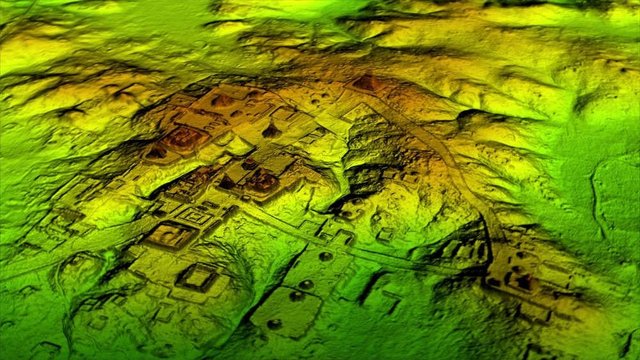
Through the energy of LiDAR innovation, archeologists have found a sprawling old Mayan city stowing away in the thick wildernesses of northern Guatemala.
A National Geographic select has nitty gritty the new disclosure of this tremendous pre-Columbian settlement, completed by a group of global archeologists drove by the PACUNAM Foundation – a Guatemalan science charitable gathering.
Among their finds were the vestiges of no less than 60,000 houses, castles, cautious dividers, boulevards, and thruways. It even uncovered that an immense hill of earth, already accepted to be a slope, was really a 30-meter (100-foot) pyramid structure. Past evaluations said the zone was likely home to 5 million individuals, now that figure is looking more like 15 million.
The lost city was found by means of a review of 2,100 square kilometers (810 square miles) of the Peten wilderness. The ground-infiltrating laser innovation, called LiDAR, is moderately new and utilizes beat laser light to look past the shelter of trees to check whether there are any scattered destroys underneath. Their examination accumulated so much information that it could take a long time to completely think about it, yet the scientists are as of now getting ready to angle for additional. Over the coming three years, a similar group wants to review 14,000 square kilometers (5,400 square miles) of the Guatemalan wilderness.
"Lidar is altering prehistoric studies the way the Hubble Space Telescope upset stargazing," Francisco Estrada-Belli, a Tulane University prehistorian, revealed to National Geographic. "We'll require 100 years to experience all [the data] and truly comprehend what we're seeing."

#There are more secrets lurking out in the Guatemala jungle. Courtesy of Wild Blue Media/National Geographic.
Most Maya human advancements were disintegrating by 900 CE, yet at its prime around 1,200 years prior, this culture flourished crosswise over Guatemala, Belize, Honduras, El Salvador, and Mexico. Albeit maybe most celebrated for their grisly customs, the Maya were captivated with stargazing, delivered unimaginable engineering, and made a propelled composing framework. Unusually, history specialists still can't concede to what caused the crumple of this fabulous human progress. In any case, this new disclosure without a doubt fortifies that the Maya human progress was a standout amongst the most dazzling societies the world has ever observed.
"We've had this western pride that perplexing civic establishments can't prosper in the tropics, that the tropics are the place human advancements go to kick the bucket," included Marcello Canuto, a Tulane University excavator. "However, with the new LiDAR-based proof from Central America and [Cambodia's] Angkor Wat, we now need to consider that unpredictable social orders may have framed in the tropics and advanced outward from that point."